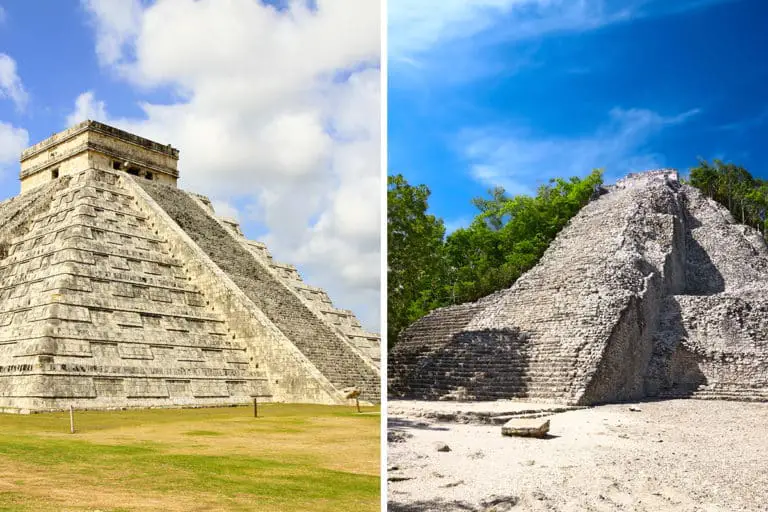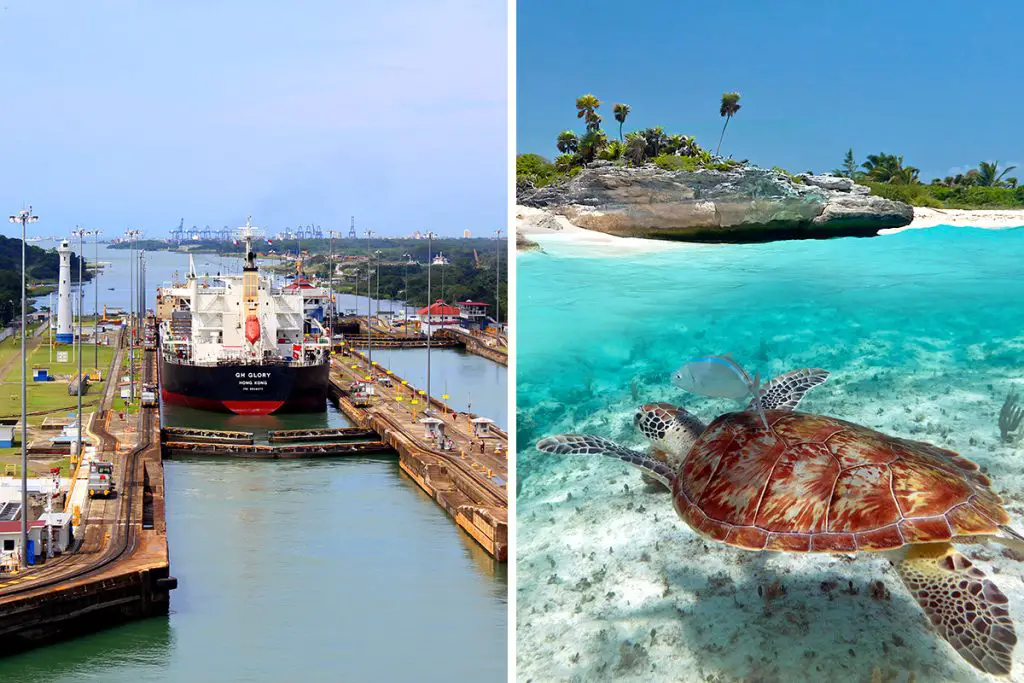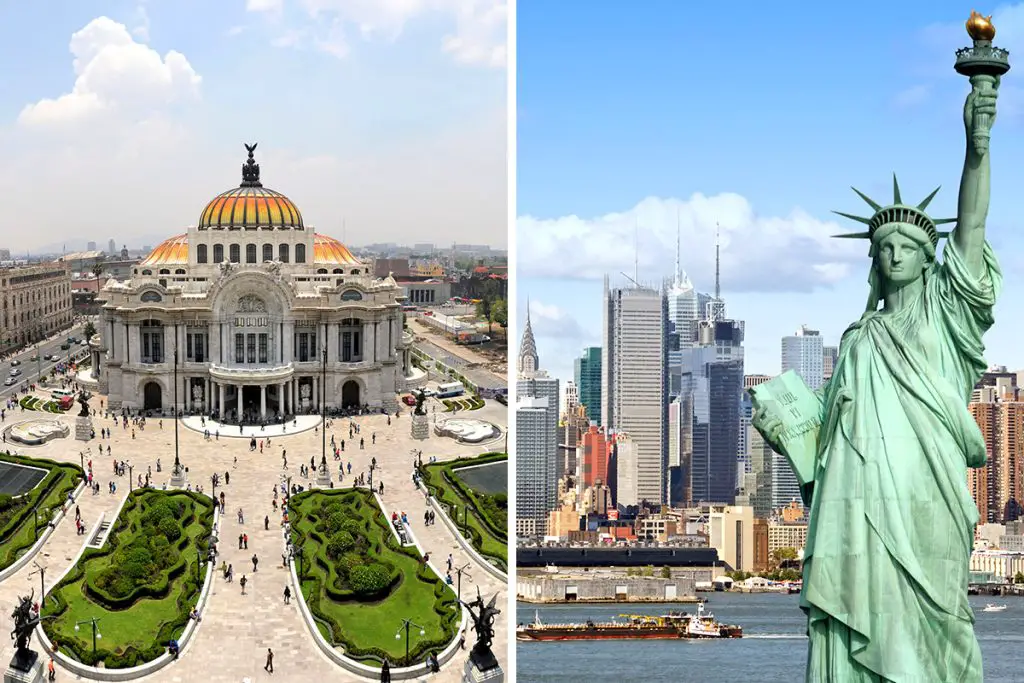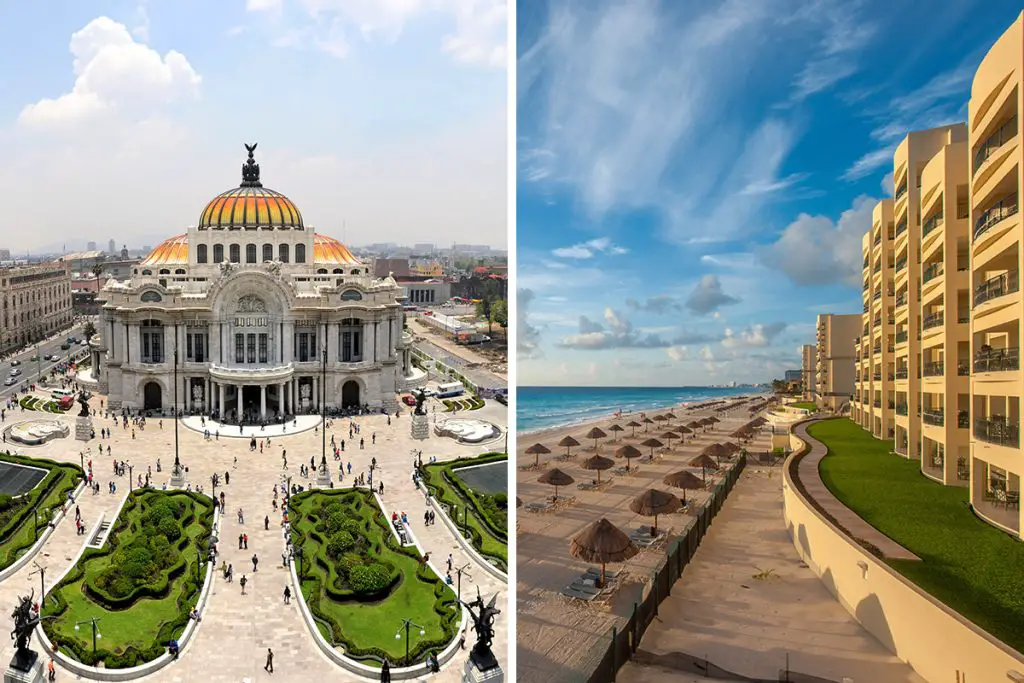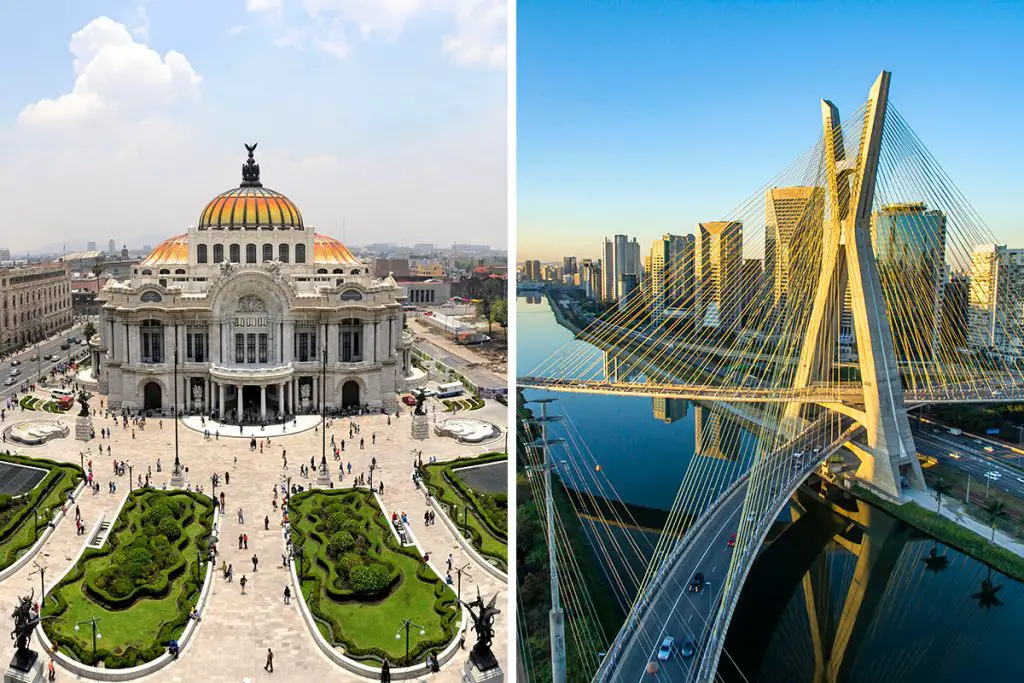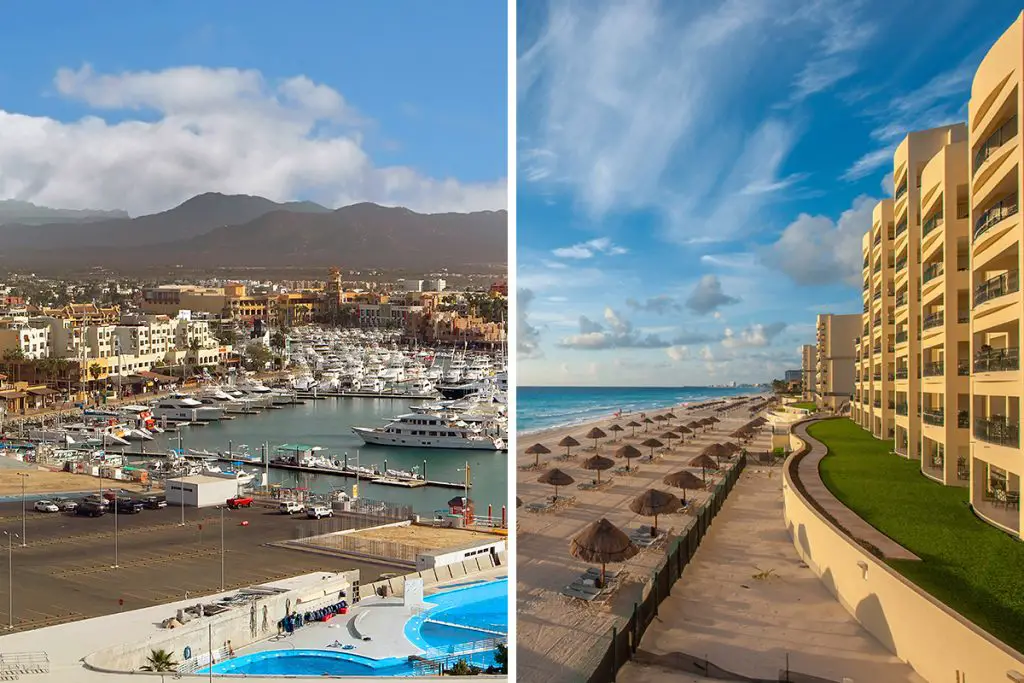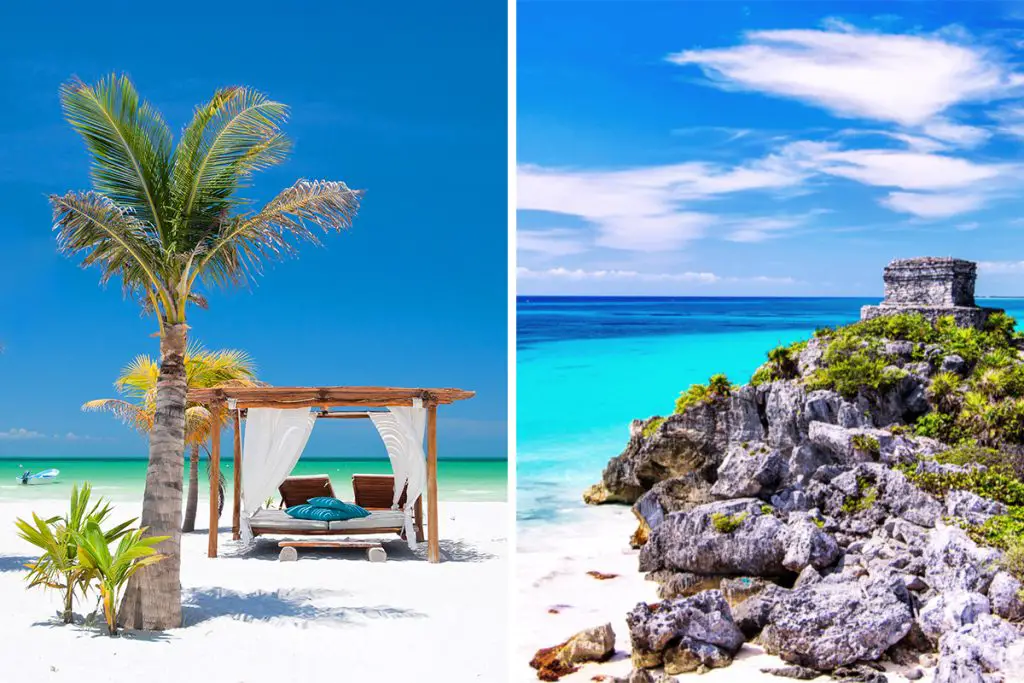Chichen Itza is the icon that has given the peninsula its well-deserved spotlight. And Coba further ups the ancient Mayans’ fame and reputation – perhaps even all of Mexico.
One is overrated, and another is underrated. But when you have these two just a bus ride away, there is no question of “which is better”, but rather “can you do both in a single day?”
Chichen Itza
Iconic. Chichen Itza has graced everyone’s minds when it comes to traveling to exotic places. A monument and testament to the cultural wealth and diversity of Mexico, Chichen Itza stands tall among the many across the country.
Thanks to its fame and iconic main pyramid, Chichen Itza perhaps doesn’t need a lengthy introduction. Its place among the roster of the world’s new seven wonders is reason enough for its grandeur. When you’re in the Yucatan Peninsula, Chichen Itza isn’t a question.
What Makes Chichen Itza Unique?
New Seven Wonders of the World
Thanks to its sheer scale and beauty, Chichen Itza can easily become a wonder of the world. Especially as it explicitly depicts what genius the ancient Mayan people already has back in their heyday. With the right combination of architectural and cultural values, Chichen Itza is an icon in itself.
The famous ruins were awarded the iconic title of New Wonder of The World in 2007. The site has seen more recognition and tourist influx year after year since.
The illustrious title is given to sites and destinations that hold historical value. A lot of which best represent the heritage and culture of humanity. Chichen Itza holds a great collection of structures and items that best gives a glimpse of the old world.
The iconic ruin is just one of the several ruins that dot the entire stretch of the Yucatan Peninsula. Chichen Itza, despite its fame and value, is just a mere stop among the many you can find. You can easily visit Coba, Ek Balam, and the Tulum ruins after your tour here.
On top of its old-world delights and neighboring ruins, you can also visit quaint charming towns near the complex. Visit the off-the-beaten-path towns of Piste, west of Chichen Itza, and Valladolid to the east.
Valladolid
Just 30 minutes east of Chichen Itza, Valladolid is an off-the-beaten-path town that is criminally underrated. The old rustic town is adorned with colorful streets and buildings awash with authenticity and Mayan charm. With its proximity to the ruins, Valladolid is often an extra stop for tourists curious enough to taste a bit of authenticity.
Upon visiting Valladolid, you can be washed over by the overwhelming sense of its authenticity. The town perfectly depicts its famous Mayan roots.
But despite the fame of its neighboring ruins, the city somehow remained under the mainstream tourism radar. Thus, Valladolid has kept its Mayan roots well intact. Valladolid is perfect for those who want to get intimate with the country’s hidden gems that best represent its culture.
The Temple of Kukulcan
Chichen Itza is filled with a plethora of curious structures but none more iconic than El Castillo, the ancient city’s main pyramid. El Castillo is perhaps the most famous ruin in all of Mexico, constantly seen all over the internet today.
Also known as “The Temple of Kukulcan” it is the place of worship for the feathered serpent deity. The pyramid is also the most important center in all of Chichen Itza.
Kukulcan was believed to be one of the creator gods most revered by the ancient Mayan people. The pyramid is said to be where most rituals and ceremonies were held. Some extreme assumptions even suggested that ritualistic sacrifices were also made here.
The Descent of Kukulcan
El Castillo’s architecture is yet another marvel of the Mayan genius. The pyramid’s exterior design creates an illusion of a giant serpent descending the temple, called the “Descent of Kukulcan”. This is made possible by the equinox sun, which only happens twice a year.
However, this phenomenon only lasts for a few minutes. The sun’s position allows the pyramid’s platforms to create an impression via casting a shadow. This resembles a serpent’s body crawling down as the sun moves.
Sacred Cenote
The Sacred Cenote evokes a mysterious allure with its steep dimensions. You can easily understand why the ancient Mayans of Chichen Itza consider this cenote sacred. The Sacred Cenote just outside Chichen Itza is around 197 feet (60 m) wide, and 98 feet deep (30 m).
Due to its measurements, and relatively unexplored depths, the Sacred Cenote is strictly for viewing only. You can only marvel at the natural formation from a cliff at the mouth. The cenote is still being explored and studied, and thus may be the reason why swimming isn’t allowed.
Initial exploration led to the discovery of several well-preserved items from its Mayan past. Many of these objects still hold a great source of information such as obsidian knives and human skeletons.
Cenote Ik Kil
But if you really are itching to swim in a nearby cenote, the famous Cenote Ik Kil is accessible from Chichen Itza. Just a couple of miles from the ancient city, Cenote Ik Kil is famous for its soothing freshwater. Ik Kil descends a sheer 85 feet or 26 meters from the ground. It is an ideal end for your Chichen Itza tour.
Characteristic long vines coming down, blue waters, and lush vegetation around, the cenote colors the cenote. You can easily feel easy and pristine. The sinkhole has a depth of 197 feet or 60 meters and offers excellent visibility.
Coba
Underrated and often overlooked, Coba is a sleeping icon that is even perhaps more valuable than the famous Chichen Itza. The ancient city has best provided the life of the ancient Mayans, thanks to its well-preserved features, Coba should be on everyone’s lists.
Best for those who dare to look beyond coveted travel lists, Coba is a treasure of the Yucatan hidden among its rich nature. Ruins and curious finds do not only define Coba. Situated in a naturally gifted landscape, you can enjoy a plethora of activities here. You can even climb its main pyramid, which is something you can’t say for several ruins across the Yucatan.
What Makes Coba Unique?
Nohoch Mul
Coba’s main structure and arguably its most popular stop are the Nohoch Mul Pyramid. The iconic pyramid stands an imposing 137 feet (42 meters) and is the tallest ruin in all of the Yucatan.
Nohoch Mul is a fascinating piece, an archeological find. the pyramid has seven levels with rounded corners, almost the same as Chichen Itza. Nohoch Mul may have been used as a ceremonial center.
Unlike most pyramids in the many ruins of Yucatan, Nohoch Mul, even with its height is climbable. If you can dare take on its 120 steps, you will be rewarded with breathtaking views that can even topple the best of Chichen Itza. Not even the descent of Kukulcan can top the feeling of being able to get to a pyramid’s peak.
The Coba Steles
Upon discovering Coba, large stone slabs or steles were found speckled across the city. These stone slabs contain drawings and glyphs that were said to document the city’s history. They depict several of Coba’s significant moments and major events.
The steles of Coba are probably the most significant piece of an archeological find. They tell us how forward-thinking the ancient denizens were.
Archeologists and historians used these stone slabs to decipher and extract information. Experts have found the history and the developments of the Mayan culture around the area. Unfortunately, the glyphs and drawings aren’t intelligible as they have faded out due to weathering. The steles are currently housed in thatched-roof huts.
After careful deciphering, one of these steles, named Estela 1 has indicated the date “December 21, 2012”. It was said that the date marked the beginning of a new era.
Sacbes: The City’s White Arteries
Coba was a central hub in the Mayan world, and what’s fascinating about it is that it isn’t just a single collection of structures. It is in fact a slew of different areas scattered across a dense forest connected by white roads called “sacbes”.
These roads can be as wide as 10 to 30 feet (3 to 9 meters), citizens used these roads to navigate to different points in Coba. The sacbes are also used for commerce, as a means to transport goods, especially at night when temperatures are cooler. The white color of the sacbes reflects the moon’s light during a clear night, illuminating the way.
The sacbes also gave light to the discovery that the Mayans used to transport their goods by foot, and not by wheeled vehicles. Even though the wheel already existed during that time.
At first, sacbes were thought to connect to different parts of the city only. Yet upon further discovery, one sacbe extended 62 miles or 100 km west almost connecting to Chichen Itza. Many experts were led to believe that the sacbes might have also been used to connect religious processions and trade from one city to another.
The Location
Upon getting to Coba, you’ll be met with a vast expanse that is both gifted and diverse making it an even more interesting adventure. It’s situated within a dense and vast forest and has an interesting roster of natural formations.
But Coba took a long time to be discovered due to its location. Covered in thick vegetation, surrounded by lush jungles, it was initially largely ignored. Since its discovery in the 1800s, Coba is still being excavated and experts are still learning more about the site.
Surrounding the ruins, you can have a plethora of cenotes and five lagoons to visit after your fulfilling Coba tour. Imagine taking a dip in the many cenotes and lagoons you can find just sitting close. Choo-Ha, Multum-Ha, and Tamcach-Ha are just some of the nearest cenotes you can swim in.
The natural life that surrounds the city helped it thrive. Thanks to the variety of plant and animal life, the citizens have sources to cultivate. You can easily tell why such a majestic city was established here. The ancient city is not just surrounded by natural wealth but with its proximity to Tulum, an ancient trading post.
Coba is also easily accessible from Tulum, where you can find a wide variety of accommodation options, and also other ruins. You can make Tulum your Riviera Maya home base, and explore the entire region from there. Coba is one of the must-visits if you’re staying in Tulum.
Which Is Better – Coba or Chichen Itza?
If you want ruins that have some thrill and interesting backstories, Coba has to be the best option. You may expect Chichen Itza might take the spot but all it has is its few sections and the town of Piste and Valladolid, offering a bit of local living.
Coba on the other hand is surrounded by myriads of cenotes and five lagoons, with a road taking you straight to Tulum. The ancient city holds great importance, and its sections are more than just mere sightseeing spots. They have given insight into the ancient way of life of the Mayans as well. Not to mention, the main pyramid’s climbable conditions.
FAQ
Is Coba Taller Than Chichen Itza?
The Nohoch Mul Pyramid, Coba’s main structure is the tallest ancient structure in all of the Yucatan. Chichen Itza’s El Castillo, which stands around 98 feet (30 meters) pales in comparison to Nohoch Mul’s 137 feet (42 meters).
Is Chichen Itza in Coba?
Chichen Itza sits far west from Coba and is completely separated. Although, recent discoveries suggest that both cities were connected. A sacbe was found jutting out of Coba heading in Chichen Itza’s direction.
How Far Is Coba From Chichen Itza?
Coba is approximately 55 miles, or 89 km from Chichen Itza, directly.
Chichen Itza and Coba in One Day
Despite the sheer distance, it can only take less than a couple of hours to travel between the two ruins. You can easily take a Chichen Itza–Coba Tour in less than a day.
Coba and Chichen Itza Tour
You can actually do a Coba and Chichen Itza tour, especially as it takes around two hours to travel between them. Book tours online, or at the many tour companies available in Cancun, Playa del Carmen, and especially in Tulum.

